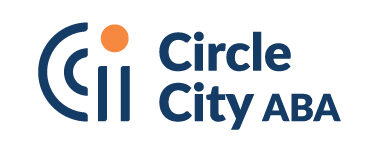
Playgrounds are beautiful places for children to explore, socialize, and have fun. However, for families with children on the autism spectrum, a trip to the playground can present unique challenges. Understanding how to create a positive and supportive playground experience is essential as a parent or caregiver. This blog post will explore the top tips for visiting the playground with Autism, making your child’s playground visits enjoyable, safe, and inclusive.
Tips for Visiting the Playground with Autism
- Choose the Right Time
Selecting the appropriate time to visit the playground can significantly impact your child’s experience. Aim for quieter hours when the playground is less crowded, such as early mornings or late afternoons on weekdays. Fewer children mean less overwhelming stimuli, giving your child more space and time to engage comfortably. - Prepare for the Visit
Before heading to the playground, take some time to prepare your child for the experience. Use visual schedules or social stories to help them understand what to expect. Discuss playground rules and proper behavior in an easily understandable way for your child. Preparing them mentally can reduce anxiety and make the outing more predictable. - Identify Sensory-Friendly Playgrounds
Some communities have playgrounds designed with sensory needs in mind. Seek out such inclusive playgrounds in your area. These often feature equipment that addresses various sensory preferences. These playgrounds may include sensory panels, quiet spaces, and adaptive swings catering to children with autism and other sensory processing challenges. - Gradual Exposure
Consider a gradual exposure approach for children who may feel overwhelmed by new environments. Start by visiting the playground for short periods during quieter times, gradually increasing the duration and frequency as your child becomes more comfortable. This step-by-step process can build confidence and familiarity with the playground setting. - Bring Comfort Items
Encourage your child to bring comfort items to the playground to provide a sense of security and familiarity. These items could be a favorite toy, a cozy blanket, or noise-canceling headphones. These familiar objects can serve as a soothing anchor, especially during heightened anxiety. - Encourage Parallel Play
Children with autism might prefer parallel play, where they engage in similar activities alongside other children without direct interaction. This type of play is entirely acceptable and can help your child feel more at ease in a social setting. As they become more comfortable, they may initiate interactions on their own. - Support Social Interactions
If your child shows interest in social interactions, gently facilitate positive play experiences with other children. Encourage shared activities and communication while being respectful of your child’s boundaries. Praise their efforts and successes, reinforcing positive social behaviors. - Be Observant and Flexible
Pay attention to your child’s cues and be ready to adjust your plans accordingly. If your child appears overwhelmed or agitated, consider taking a break or leaving the playground. Flexibility is vital to prioritizing your child’s comfort and well-being. - Take Safety Measures
While your child is playing on the playground, you can take different safety measures. First, make sure to include some identification on your child’s body. Also, to help your child have visual reminders to stay within boundaries, it’s good to find playgrounds that feature custom entrances or ones that are fenced in. - Implement Communication Strategies
Some autistic children communicate through nonverbal cues and different behaviors. By paying attention to what your child is trying to communicate, you can begin implementing techniques so you and your child can build a level of communication at the playground. For example, you can label pictures of the types of playground equipment and have your child point to where they want to go.
Visiting the playground with a child on the autism spectrum can be an enriching and enjoyable experience with the right approach. Planning, choosing suitable playgrounds, and understanding your child’s needs can create a positive and inclusive playground experience. Remember that each child is unique, so it’s essential to tailor your approach based on their preferences and sensitivities. With patience, support, and a little creativity, the playground can become a place of joy, growth, and social connection for children with autism.
Tips for Replicating an Autism-Friendly Playground at Home
Incorporating an autism-friendly playground at home can give your child an area where they can have fun but also be comfortable with their surroundings. This can also help prepare your child for visiting a public playground. Here are some tips for making the best home playground:
- Include a sensory-friendly area – An example of a sensory area can be a sandbox with tools for scooping and building. You can also utilize equipment with soft textures, like a foam mat.
- Use equipment that can help improve coordination – Having a swing, slide, or rope that requires coordination and balance can help your child learn how to use this equipment in other settings while improving their coordination.
- Create a quiet space – If your child needs a place to calm down, incorporating a quiet area can help them focus on something relaxing. This can be a shady spot with comfortable seating, and you can supply quiet, calming toys for the area.
Transition Strategies for Going from At-Home Playgrounds to Public Playgrounds
When your child is ready to have fun at a public playground, here are some strategies to help them feel comfortable in a new setting.
- Let your child lead the fun – Let your child to have a say in what activities they want to try. It may be best to start small and try one thing at a time at the park so your child can get used to some of the new equipment.
- Encourage interest with other children – Promote exposure to other children by saying things like, “Look at those kids on the swings! That looks awesome. Do you want to go on the swings with them?” This can help spark your child’s interest in other people or activities.
- Bring calming tools – If your child begins to feel overwhelmed, you can prepare a bag of calming tools and familiar toys, such as fidget toys, stuffed animals, weighted blankets, and a water bottle.
By starting small and building up new activities and interactions, your child can learn how to make your visit to the playground with Autism successful. You can implement these transition strategies as well as our general tips to promote a fun and safe environment.
About Circle City ABA
Circle City ABA passionately nurtures progress through play with ABA therapy. We develop programs and services specifically designed for each child. Our child-centered, compassionate approach to therapy combines family goals and clinical best practices to help kids learn and grow. We’ll work together to define success and help your child achieve it.
Contact our admissions team for more information on our services and how we can support you and your child.


